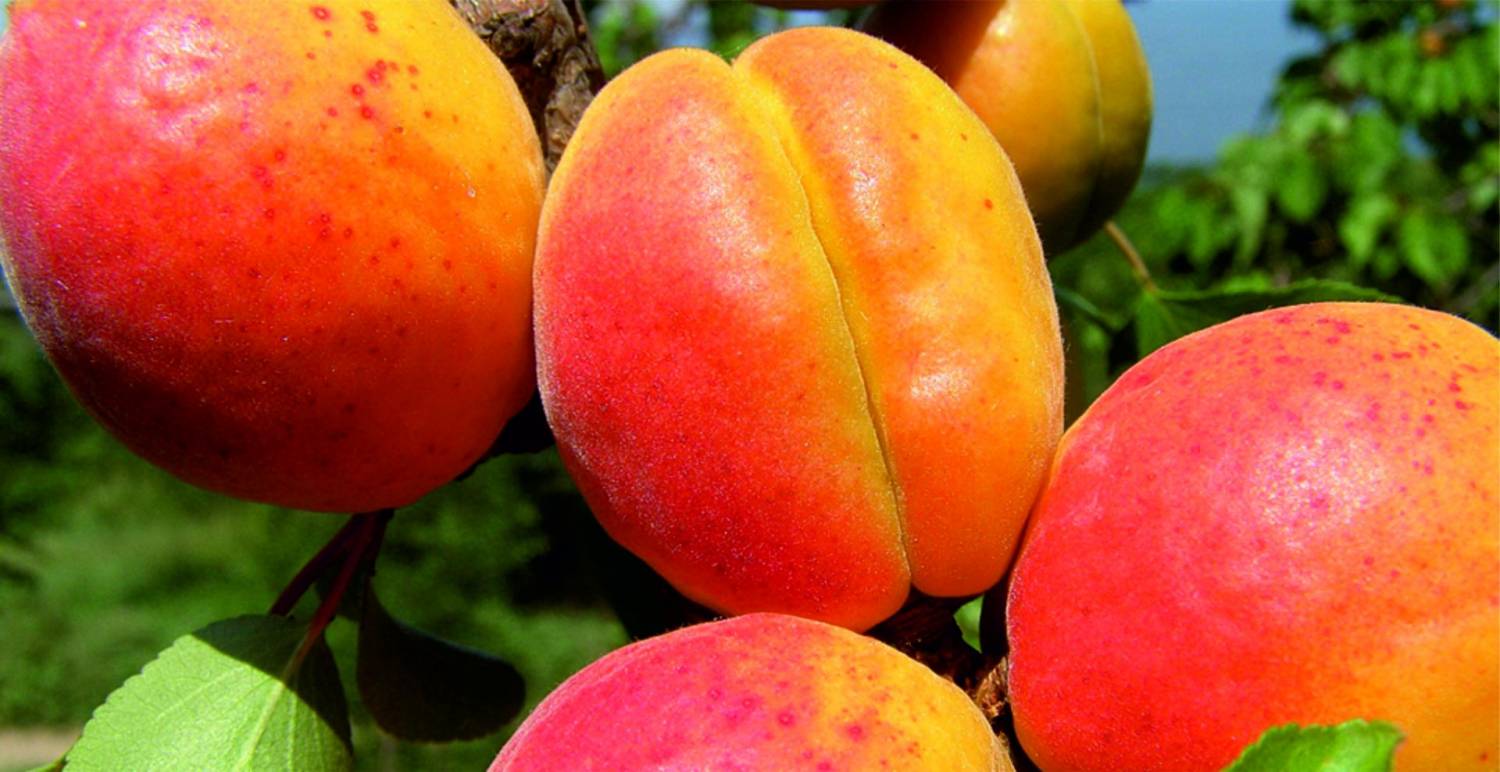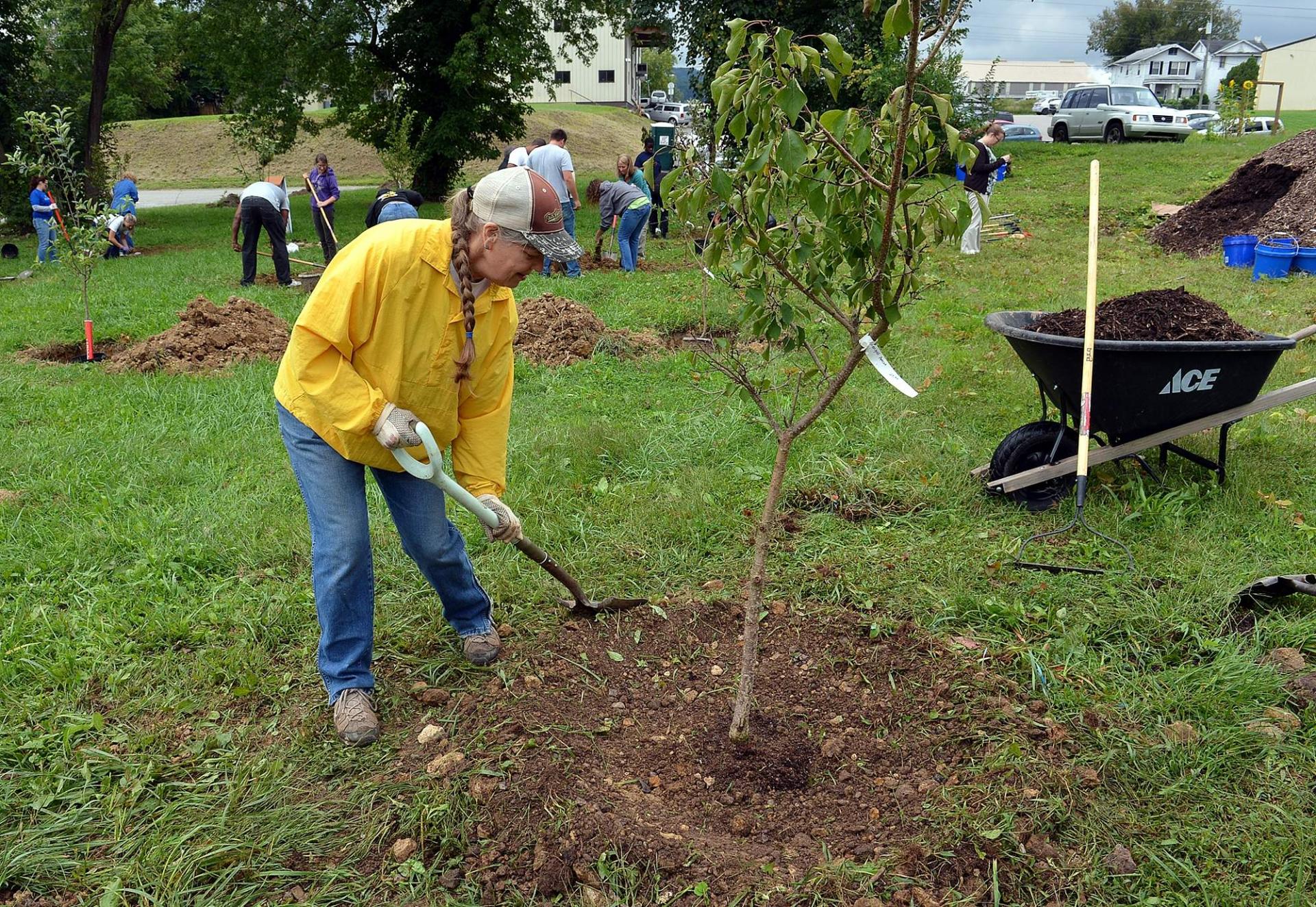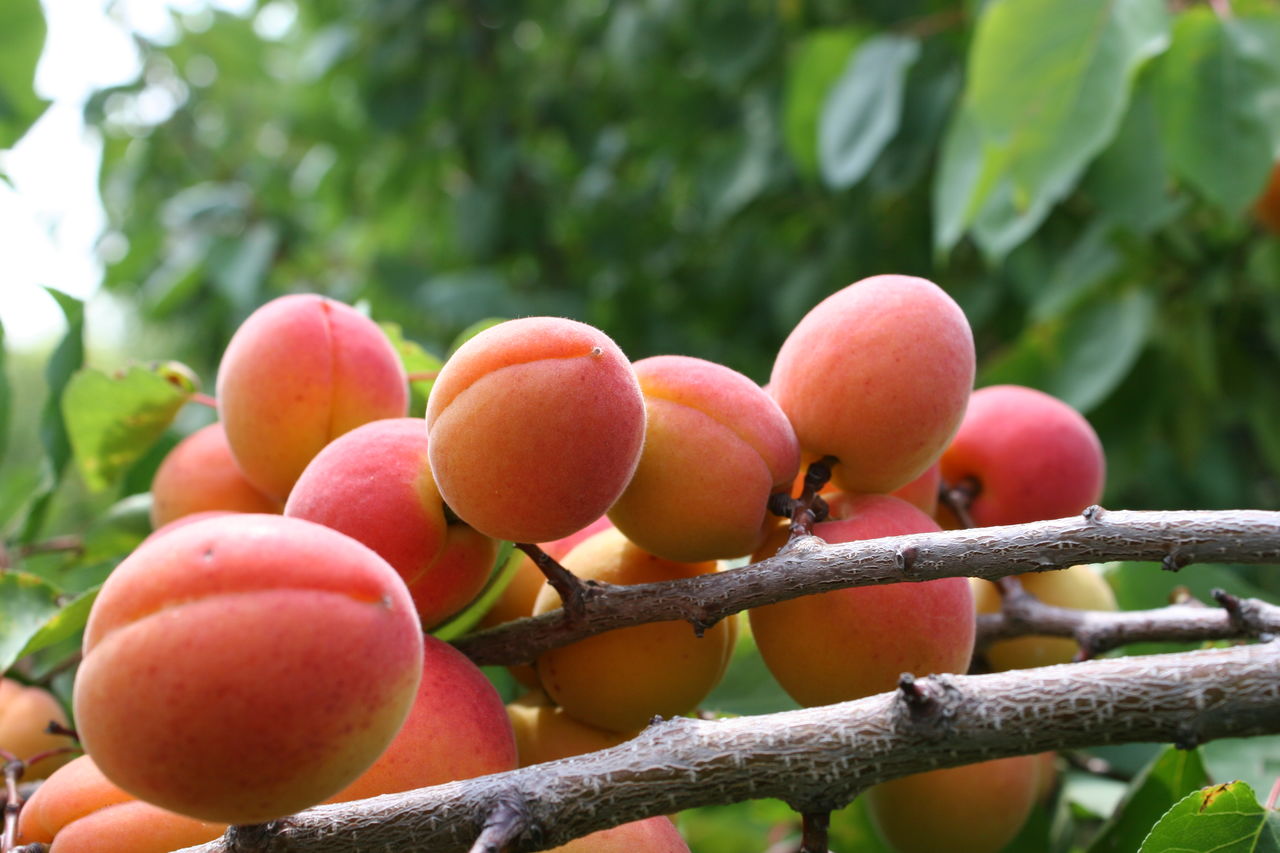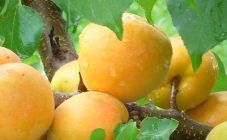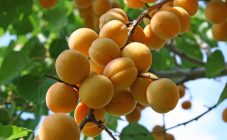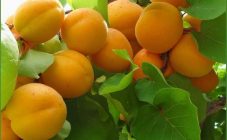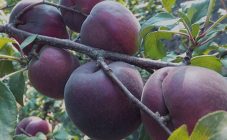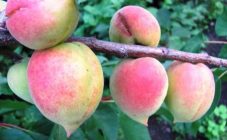Content:
The homeland of the apricot is still not known exactly. Some are inclined to believe that this plant spread throughout the world gradually from China. But many scientists argue that the apricot was first grown in Armenia, because it was in this country that ancient apricot seeds were found.
History of appearance and types
Soviet breeders bred the Krasnoshchekiy apricot back in 1949 in the Crimea, since that time many other hybrids have been bred on the basis of this variety, such as: Krasnoshchekiy Nikitskiy, Son Krasnoshchekov.
These plants are grown mainly in the southern regions of Russia. Here for them a more favorable environment, and the fruits saturated with heat and sun, have the best indicators in size, weight, color, taste, content of nutrients. Frost resistance allows them to be grown in the Middle zone and even in the South Urals. In the Moscow region, the Son Krasnoshchekova variety grows well. It easily tolerates temperature changes.
Red-cheeked Nikitsky is distinguished by an elongated fruit shape and sweeter and more tender pulp.
The varieties of the Krasnoshekiy variety include such varieties as: Krasnoschekiy late, Son of Krasnoshchekov, Kranoshekiy Nikitskiy, to the winter-hardy varieties of this species - Hardy, Snegirek, Russian. These varieties can be identified by one name Red Apricot.
In Russia, sometimes an apricot is called a zherdel, a yellow cream or morel.
Apricot red-cheeked description
Frost resistance
Apricot varieties Krasnoschekiy possesses high winter hardiness and can withstand 30 degrees of frost. Gardeners are surprised that by nature a thermophilic plant is so hardy and not particularly whimsical.
Flowers appear before leaves, and their absence does not interfere with pollination, although return frosts can destroy the flowers.
Before the first wintering, the seedling must be covered with burlap or thick cloth.
Yield
It is enough to have one tree in the garden to provide the whole family with enough delicious fruits.
This tree belongs to the early maturing species. The crop gives already 3 years from the year of planting, the first apricots appear in July.
Fruit characteristics
The fruit of an apricot is called a fruit because it has one pit. The skin is velvety, slightly pubescent, with a red blush on an orange background. It consists of 86% water, due to which it has a juicy pulp and a sweet taste with a pleasant aroma.
One apricot can weigh 50 grams.
The stone is either smooth or rough, with thick shells and flat seeds. The seeds have a bitter or sweetish taste.
The fruits are used both fresh and in various canned foods, jams, preserves, compotes.
From them, you can get 3 types of excellent dried fruits: apricots (dried apricot with pits), dried apricots (dried fruit halves), kaisa (whole dried apricots without pits).
Tree options
The apricot fruit tree grows up to 8 meters high. The branches are well developed, strong and long. The leaves are 9 cm long. Their arrangement is alternate.They are ovoid in shape, have denticles along the edge and are extended to the apex. They appear on the plant later than flowers.
The flowers are white with a pink center. Blossom in early spring (April or March). Spring blooming apricot is as beautiful as blooming cherry, apple, sweet cherry.
Pest and disease resistance
Diseases that can appear on the apricot are clasterosporia, moniliosis, gnomoniosis, stone fruit coccomycosis.
If you grow an apricot, even if it is unpretentious to agricultural technology, it is still necessary to monitor its condition.
When the branches turn brown, growths appear on the bark, these are symptoms of gray rot, or in another way monoliosis. You can get rid of it with the help of the drugs Decis, Fufanon.
Hole spotting (clasterosporium) appears as holes on the leaves, the release of gum (resin) from the growths, on the buds, shoots, fruits, depressed spots, spots with a red border appear on the tree trunk. Treatment is carried out with Bordeaux liquid.
Gnomoniosis, or brown spot, causes yellow-brown spots on the leaves, their twisting and dying off. The fruits do not ripen, lose their shape and fall off. Bordeaux mixture will also help.
Coccomycosis of stone fruits is mainly a disease of cherries, but can also be transmitted to apricot crops.
Autumn whitewashing of trees is needed to protect against pests that have settled in the bark for the winter, and from rodents. Early spring whitewashing will save the trees from overheating in the sun and night frosts.
Regular inspection of the tree will allow you to detect the disease in time and take measures to eliminate it.
The resulting cracks on the bark must be lubricated with garden varnish or Bordeaux mixture.
Landing
You need to start with the right choice of seedlings. Buy a seedling from trusted sellers, preferably in nurseries. Examine the root system. The stronger it is, the better the tree will take root.
If planting is planned in the spring, then the seedling should have small buds. The standard seedling height is 70 cm.
For planting, choose a sunny place, prepare the ground, mark the distance (if you plant several trees).
The ground should be cleared of unnecessary stones, plant roots and other debris. The pit should have optimal dimensions - 65 * 65 * 65.
It is advisable to make drainage from gravel and crushed stone, which is then covered with prepared soil from humus, wood ash, organic fertilizers.
This drainage, so as not to burn the roots of a young seedling, cover with clean earth.
After these procedures, you can start planting a tree, gently straightening the roots and sprinkling it with soil on top, slightly compacting. The neck of the seedling should be slightly underground. It is imperative to complete the planting with good watering, at least 25 liters of water. After about a week, you can feed.
Apricot needs abundant watering in the spring during the formation of the crown, but it is also not necessary to fill it in so that unnecessary shoots do not grow. They will slow down the growth of the tree and reduce the yield.
In autumn, watering is reduced and the seedling is prepared for wintering. It is imperative to cover it with burlap. Although Apricot Red-cheeked is a winter-hardy variety, it will give more confidence in the safety of the plant.
Care
In the first year, pruning of the apricot is not required.
Since flowering apricot is fed by large branches and foliage first, and then young branches, pruning is recommended starting from old branches. This manipulation should be carried out at the end of spring. At this time, the apricot will easily tolerate such a procedure.
The branches must be cut to the forming bud or to the tree trunk, and at the end it is imperative to cover the cut site with garden pitch so that no infection occurs, for early healing.
Pruning should be done 3 times per season. In the spring, when sap flow and budding have not yet begun, in June, to have time to thicken the crown, and in mid-October.
It is necessary to monitor the feeding. Potash fertilizers will not allow the tree to age and dry out prematurely.
Complex fertilizers, which contain such substances as manganese, boron, potassium, will be the best fertilizing for the fruit tree.
Pros and cons of the variety
Apricot Red-cheeked has a number of advantages:
- self-pollinating;
- with late flowering, it is not afraid of frost;
- indifferent to soil;
- drought-resistant;
- developing rapidly;
- bears fruit for 3 years;
- good yield.
There are also disadvantages of the variety:
- does not like lowlands;
- without pruning, the crown thickens;
- susceptible to infection;
- likes good lighting.
Apricot Son of Red-cheeked
It is a hybrid that breeders bred when crossing the Krasnoshekiy apricot and Golden Summer varieties. Like the parent, he does not need an additional pollinator. This variety has good winter hardiness, which allowed it to spread and delight gardeners in the Central Black Earth and Lower Volga regions. It ripens in July, with sunny summer and sufficient moisture, the ripening period is extended until autumn. The fruits are dense, large, the main color is orange, with a red barrel. Transportable. Thanks to the ancestor of the variety, it has early fruiting and is better adapted to monilial burn.
Apricot Nikitsky variety description
It got its name from the place where the variety was bred - the State Nikitsky Botanical Garden.
It is a strong, fast growing tree. In the presence of a sprawling dense crown. It belongs to the early varieties. Due to early flowering, damage to flower buds is possible with spring frosts. It has round-oval, juicy, tasty fruits. The color is orange with a blush.
Resistance to diseases characteristic of apricot, medium.
Gardeners like to grow in their gardens such varieties as the Red-Cheeked Apricot, the Son of the Red-Cheeked. They are loved for their yield, easy care, taste, presentation. For a patient attitude towards itself, this culture will thank you with a generous tasty harvest.
